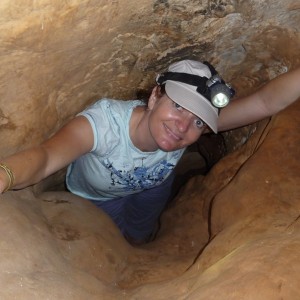| View Resource |
|
|||
| Average Rating |
|
|||
| Rate It! | To rate items you must be logged in to LifeSciTRC.. Log-in/Register now to the left. | |||
| Comment On It! |
To add comments, you must log in or register.
|
|||
| Share It! |
|
|||
| Save It! | To save the resource to a folder, please log in or register. | |||
| Description | This issue of Findings introduces Elizabeth Grice, a postdoctoral fellow studying the skin microbiome. She wants to learn how and why bacteria colonize certain places on the body, and she’s particularly interested in determining differences between bacterial communities on healthy and diseased skin. Grice hopes her work will lead to new insights for treating chronic wounds that are common in people who have diabetes or limited mobility. | |||
| Type of Resource | Non-journal Article | |||
| Format | Portable Document Format - PDF | |||
| Author |
Allison MacLachlan, Findings Magazine
|
|||
| Development Date | January 1, 2012 | |||
| Grade/Age Levels |
Middle School (Grades 6-8) High School lower division (Grades 9-10) High School upper division (Grades 11-12) Undergraduate lower division (Grades 13-14) General Public |
|||
| Pedagogy | ||||
| Learning Time | <=1 hour | |||
| Language | English | |||
| Type of Review | Reviewed By Staff | |||
| Review Date | February 21, 2012 | |||
| Keywords | ||||
| Suggested Use | ||||


This is a good reading assignment to be shared with the introductory microbiology class . This can also supplement the human microbiome project website if you discuss that with your class. Great introduction to your ever fascinating skin flora.
—Bhavya Mathur, CHATTAHOOCHEE TECHNICAL COLLEGE

I will use this resource when discussing the integumentary system with my introductory Human Anatomy and Physiology class, as there is a nice balance of relevant science (anatomy, physiology and microbiology) with personal development as a scientist. Small groups of students will be asked to research one aspect of the article that interests them, for example, the effect of high blood sugar on skin structure or the process by which inflammation interferes with skin repair, and write a short review/create an oral presentation to share with the class.
—Andrea Phillott, FLAME UniversityTo add comments, you must log in or register.
This resource affords students the opportunity to see the significant and meaningful work that is done by female scientists. Good balance between personal and scientific content which allows students to connect with both.
—David Upegui, Central Fall High School